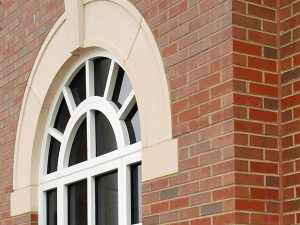Clay Brick vs. Stucco: Choosing the Right Material for Your Home
In the vast expanse of construction materials, clay brick emerges as a superior choice, especially when compared to stucco. Known for its robustness, clay brick is a material that not only stands the test of time but also provides a myriad of benefits, from enhancing the aesthetic appeal of a home to offering significant energy savings. This article delves into the advantages of clay brick over stucco and explores various brick options that cater to different needs and preferences.
Enduring Strength of Clay Brick
Clay brick is celebrated for its exceptional durability and resistance to various forms of damage. Unlike stucco, which is prone to cracking due to structural settling, seismic activity, and harsh weather conditions, clay brick withstands these challenges with ease. It is impervious to rot, termite infestation, and moisture damage, attributes that contribute to its longevity. Homes constructed with clay brick are not just buildings; they are legacies built to last for centuries with minimal upkeep.
Aesthetic and Environmental Merits
Beyond durability, clay brick offers timeless beauty that can elevate the exterior of any home. Its natural color variation and texture add character and warmth, creating an inviting ambiance. But the benefits don’t stop at aesthetics; clay brick also contributes to environmental sustainability. It is made from natural materials and can significantly reduce energy consumption by providing excellent insulation. This leads to cooler interiors in summer and warmer ones in winter, thereby reducing the reliance on heating and cooling systems.
Choosing the Right Brick
When deciding on the type of brick for your construction project, several factors come into play, including aesthetics, durability, and budget. Here are some options:
1. Traditional Clay Brick: This classic choice is renowned for its durability and timeless appeal. It is ideal for those looking to invest in a long-lasting structure that retains its beauty over time.
2. Glazed Brick: For those seeking an elegant and sophisticated finish, glazed brick is an excellent choice. Its glossy surface is not only attractive but also resistant to stains and moisture, making it perfect for areas like kitchens and bathrooms.
3. Thin Brick: Thin brick offers the aesthetic appeal of traditional brick without the associated weight or cost. It is an economical solution for achieving the brick look in interior spaces or for lightweight construction requirements.
The Verdict: Brick Over Stucco
While stucco may have its merits, the advantages of clay brick are undeniable. It is a material that pays for itself over time, offering savings on repairs, maintenance, and energy bills. Additionally, brick homes often command a higher resale value compared to their stucco counterparts. Considering the total cost of ownership, including long-term maintenance and energy efficiency, clay brick emerges as the more cost-effective and sustainable choice.
In conclusion, whether you are building a new home or considering materials for a renovation project, clay brick offers a combination of durability, beauty, and sustainability that is hard to match. Consult with a construction professional to determine the most suitable type of brick for your project and enjoy the lasting benefits that this time-honored material has to offer.

